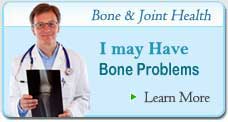» Anti-Aging
» Bones Joints & Muscle Health
» Cardiovascular Health
- Hip And Knee Joint Replacements: The Infection Risks
- All About Excessive Sweating & How To Stop Hyperhidrosis Sweats Ruining Your Life
- Should You Be Worried About Diabetic Retinopathy? Find Out If You Are Developing & How To Prevent It
- Must Know Lyme Disease Information - You Might Be Surprised To Find Out...
- Do You Have Sleep Apnea? Find Out What It Is And How To Treat It
» Chronic Pain Management
» Dental Health & Wellness
» Digestive Health Problems
» Health Care
» Mental Health
» Sexual Health
» Skin Care

How Blood Vessel Elasticity Helps Prevent Cardiovascular Problems
In just the past two decades, researchers who study the aging heart and doctors who specialize in the care of the elderly have learned more about keeping the heart and circulatory system healthy than ever before in history. They now know that change in the function and structure of the heart occurs in every person. One vital factor in maintaining good cardiovascular health is to stop blood vessel elasticity loss.
Researchers have discovered, for instance, that blood vessel elasticity depends on the health of the endothelium–the lining on the inside of the blood vessels.
Once thought to be just a normal part of aging, these changes are now perceived as having the ability to predict future cardiovascular disease even in those who have no signs of heart or circulatory problems.
Why Is Elasticity Important?
The three types of blood vessels in the body are arteries, veins and capillaries. All blood in the body flows through these vessels, but they are not all the same. Both arteries and veins have thick muscle layers that surround them and the aorta has cardiac muscle in the walls, as well.
The aorta is the largest artery and is connected directly to the heart. When blood flows from the heart and is forced into the arteries, they must expand to accept the blood and then contract to squeeze the blood into the veins as the heart relaxes between beats. This means that arteries need to be elastic to keep expanding and contracting.
When the heart relaxes, it is the job of the arteries to maintain blood pressure and keep it moving forward. Arteries maintain the minimum needs of blood pressure. If they did not work, blood pressure would be closer to 120/0 instead of 120/80.
Arteries become smaller further from the heart and branch into capillaries, which are much thinner and web-like. In the capillaries, fresh blood and waste products are exchanged and moved to various parts of the body. Capillaries also send out white blood cells as a defense against invaders.
As they continue through the body, capillaries grow thicker and merge to form veins. Veins move blood back to the heart as it completes its circle through the body, thus getting its name as the circulatory system.
Loss of Blood Vessel Elasticity
All of this means that to keep the blood flowing through the body, blood vessel elasticity is of utmost importance.
As people age, some of the smooth muscle cells in the various blood vessels die, which means those that remain must work harder. A process called angiogenesis that leads to the development or repair of the vessels, slows down with age.
Other changes begin to happen, such as an imbalance of elastin and collagen in the middle of the vessels, making them less elastic and supple. That is why people who continue to have a healthy endothelium–inner blood vessel lining–as they age have a reduced risk of heart attacks and strokes.
Even as far back as the 1600s, an English physician, Thomas Sydenham, said a man is only as old as his arteries. The job the heart and blood vessels do each day is nothing short of miraculous.
Every day, about 1800 gallons of blood are pumped through the intricate network that makes up the circulatory system.
Enough blood is pumped through this system in a lifetime to fill over three supertankers–or about one million barrels. This is a major feat of perfect timing and it goes unnoticed unless or until a problem arises.
With the changes related to age, though, the cardiovascular system is more prone to diseases such as high blood pressure and atherosclerosis–or hardening of the arteries. For people aged sixty-five and older, up to forty percent of all deaths are related to heart problems.
For instance, by age eighty the likelihood of dying from heart failure is increased many times over that same risk at age fifty.
Importance of Healthy Lifestyle
While there is little science can do about what is considered the normal aging process at this time, researchers and scientists hope that in the future they will have the ability to intervene in the aging of the arteries and heart, and slow the process while people are young and healthy. They are working to discover ways to delay or prevent the onset of cardiovascular disease such as stroke, heart disease and its forerunners such as high blood pressure and vessel elasticity loss.
Doctors, researchers and scientists believe that future interventions in the aging process are entirely possible. As they learn more about how the molecules and cells change during age, they come closer to finding a way to slow down the aging process.
Gene therapy is one way they hope to meet this goal, but it will require considerable innovation and effort in the coming years.
In the meantime, however, they have determined that lifestyle can be a major factor in reducing or increasing the risks of cardiovascular disorders. They continue to uncover more evidence that a poor lifestyle that includes a fat, sodium and cholesterol-laden diet, no exercise, and habits such as smoking, contribute to the loss of blood vessel elasticity and thus to circulatory problems.
Even with the changes that the blood vessels and heart undergo with age, including the thickening and stiffening of the arteries, a healthy lifestyle can slow down and help to prevent the progress of these disorders.
Removing some of the known major risk factors can only serve to delay the eventual deterioration of all body systems, and help to increase blood vessel elasticity to improve the circulatory system.
Doing everything that can be done to help the body stay healthy may increase a normal lifespan. An individual can work toward good health by keeping his or her weight down, eating a diet rich in fish, lean protein, nuts, oatmeal, low-fat dairy, fruits and vegetables.
Exercise every day and get enough sleep.
Do not smoke–at all–and limit alcohol intake. Schedule regular physical check-ups and do not discontinue prescribed medications without discussing it with the doctor.
As science progresses, individuals can make a vast difference by taking steps to do what can be done to keep the body in good health, which in turn, will help to maintain blood vessel elasticity and ward off cardiovascular disease.
In the mean time, do your heart a favor and be sure to supplement your diet with the vitally essential vitamins and minerals that will ensure you have optimal blood vessel, cadiovascular health.
» Discover a Powerful Solution To Improve Vascular Health Now
You May Also Find Informative:
Aging Fit - Health Research & Information
Better Health. Energy. Quality.






